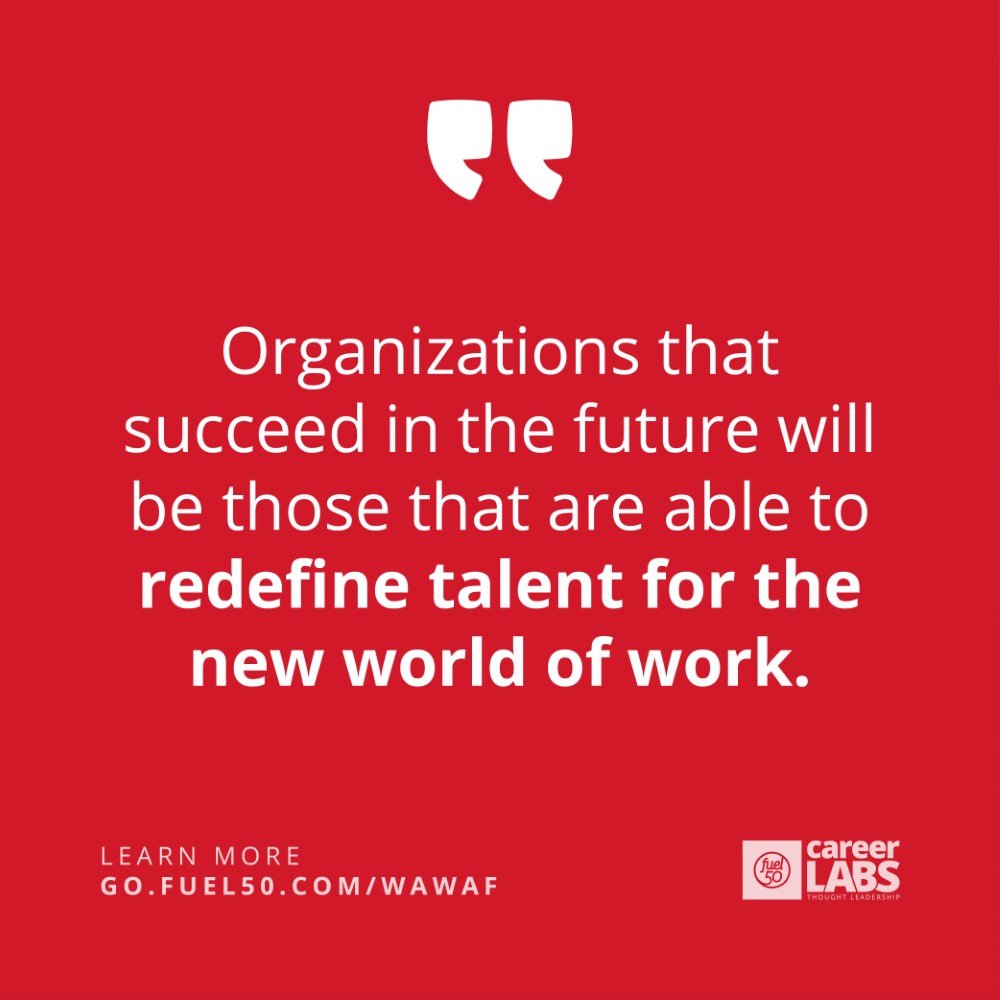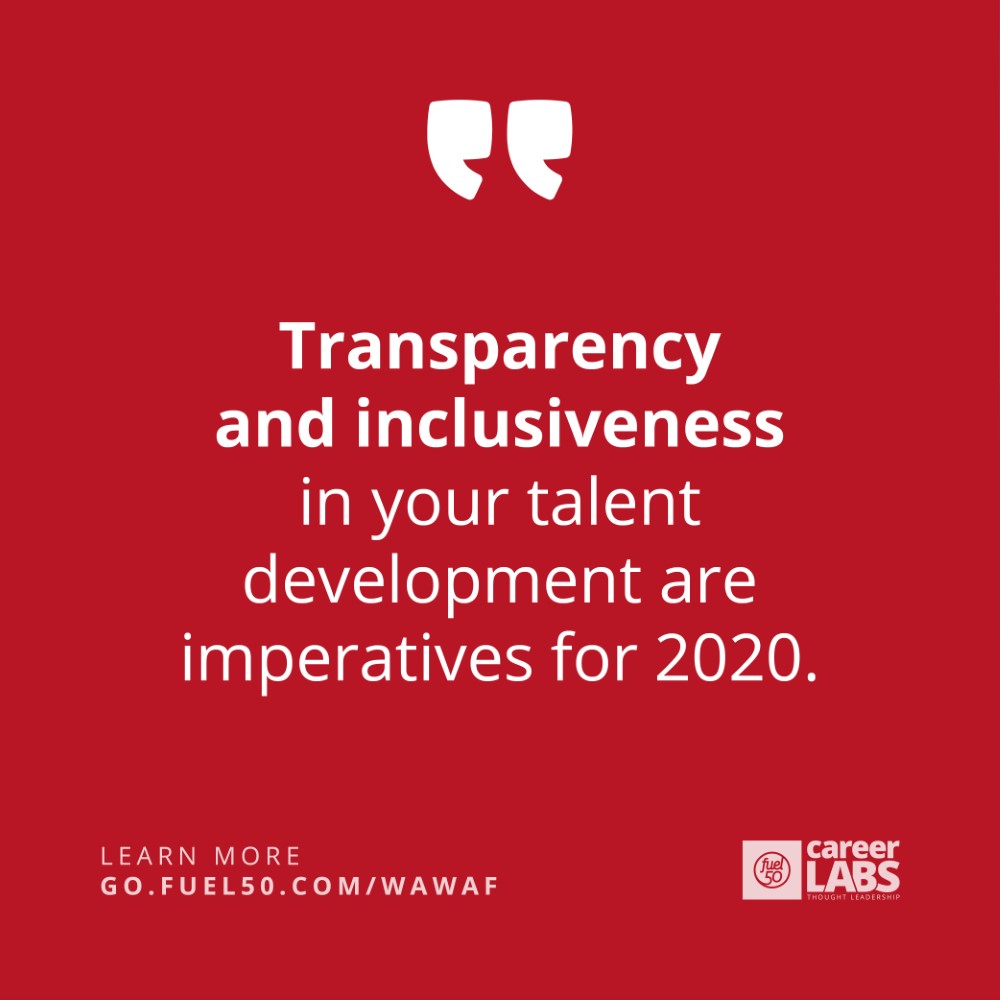Originally published by WorldatWork.
What is the biggest challenge we face in 2020? It’s this:
Redefining talent for the decade to come.
Back in December 2018, NASA published an intriguing, forward-thinking series of papers under the heading “The Future of Work.” One article in particular was eye-catching because of its title: “Redefining Talent.” In it, NASA made this point:
“At the intersection of mission and people is NASA’s need to redefine talent, not just talent acquisition … With no one model best suited to acquire and match talent to task, redefining talent requires organizations to both assess their ability to access new talent pools and, in parallel, ensure work is restructured to harvest the most fruitful results from employing new talent models.”
Although NASA may be focused on its goal of returning to the Moon and eventually sending humans to Mars, the agency knows that to do so, it needs to start by redefining the talent they will need tomorrow — not just today.
The Center for Creative Leadership, a top-ranked, global provider of leadership development, agrees with NASA’s assessment. The center posits that “Talent in the digital era is changing … (and) the workforce is being totally reshaped. Very soon, the talent landscape will look completely different, but most companies are still operating in decades-old paradigm when it comes to talent.”
The Meaning of ‘Talent’
While traditional best-practice guidelines recommend offering developmental opportunities to retain and engage “talented” employees and creating internal “talent pools” for succession planning, how can you do this unless you have first decided what “talent” actually means for your organization?
A number of basic questions beg to be answered, such as:
- What do we mean by talent? We need to replace the decades-old concept of talent as being only those in the top right corner of the nine-box talent grid. In today’s world we need to be inclusive about talent and work from the thesis that everyone has talent. “Talent for what?” becomes the more important question as we work toward an optimized talent strategy for the future of work.
- Is “talent” a permanent and constant personality characteristic? Is it something that a person just does or doesn’t have?
- How do we identify, measure or predict potential if it “exists in possibility?” What if it’s not yet actual?
- Can talent actually be developed over time? And if so, how? And, one more thing — the term “talent” is often used interchangeably with the term “potential.” Potential implies an individual has the capability to take on future responsibilities that go beyond their current role. Yet, it is something to be realized in the future, and it is foolhardy to assume that it equates to current or past performance in a substantially different role.
Wanted: A Broader Definition
A survey of 20 major corporations published in the Journal of Organizational and Industrial Psychology found that 85% of organizations defined talent based on the potential for vertical movement up the organizational ladder. Similar results were also reported by the Corporate Leadership Council, with 47% of organizations defining “high potentials” based on their ability to advance two to four levels, and another 26% intending to move in this direction soon.
Surprisingly, only one in 20 organizations — a mere 5% — attempted to adjust their conception of what talent meant for their organization to align with strategic goals and upcoming business challenges.
This is incredibly short-sighted considering that the pitfalls of limiting your talent decisions to only the potential C-suite candidates are readily apparent.
By definition, only a small percentage of your workforce can be considered “high potential” talent (generally around 10%). As in many organizations, desirable development opportunities are limited to talent pool candidates, and by focusing largely on them, you risk disengaging the remaining — and largest — portion of your workforce.
When you limit your talent management efforts to those with supposed “leadership potential,” you fail to retain valuable “expert” and “hi-po” performers. Despite their lack of leadership ambitions, these individuals constitute nearly two-thirds (60%) of the workforce, are less likely to leave, and have real potential to add value on a daily basis.
But most organizations are still stuck operating in old paradigms when it comes to talent.
4 Steps to Future Talent Success
It’s pretty clear that organizations that succeed in the future will be the very organizations that are able to redefine talent for the new world of work. And, as the Center for Creative Leadership noted, they will prosper through constant change as they:
- Increase engagement and retention of all their talent — including freelancers and gig economy workers;
- Elevate their employer brand and gain access to a larger talent pool;
- Harness a diverse and dynamic talent base to accelerate culture change; and,
- Reduce their vulnerability to the ongoing shifts in the talent market.
One more thing to remember: The most innovative career management approaches now focus on enabling individuals to navigate their own unique career paths, in accordance with their individual preferences.
By doing this, workers take ownership for their own development, working together with their managers to grow their strengths and answer the perennial question of “Talent for what?” in a meaningful and personally defined way. This self-driven talent-development strategy will assist with the re-engineered and reskilled workforce that we need to future-proof our organizations.
Transparency and inclusiveness in your talent development are imperatives for 2020 — but more on that to come.

Future-Proof Your Workforce
Our latest toolset, Talent Blueprint™, has been skilfully designed to enable organizations to future-proof their workforce and respond to evolving work modalities.
Powered by Fuel50’s award-winning Artificial Intelligence (AI)-enabled SaaS offering, FuelArchitecture™, Talent Blueprint helps organizations move away from complex and rigid hierarchical structures, to flatter, more agile configurations.
“The rapid progress of the digital age has ushered in an era of incredible disruption, quickly evolving customer and market demands and making it more challenging than ever to compete in the global economy,” said Anne Fulton, Co-Founder and CEO of Fuel50. “To succeed, organizations must adapt and shift the way they structure and utilize their workforce. Fuel50’s Talent Blueprint gives talent leaders clarity on the skills and capabilities that exist within their organization and enables them to quickly mobilize talent to adjust to evolving business requirements and organizational strategies.”
Read the full press release on the Talent Blueprint
Josh Bersin, leading HR tech futurist, in an interview with US-leading financial services organization Vanguard describes how the company of 17,000 employees realized they needed a digital transformation. This transformation was called “New Ways of Working”, and it essentially focused on building a lean and agile workforce – identifying that talent mobility and skills development was essential.
With the help of Fuel50, Vanguard is now looking at reducing their role profiles by 90%, which will enable them to align their business requirements and organizational strategies more closely, give employees a clearer visual into their future career paths within the company, and future-proof the organization with greater workforce agility along the way.
Watch Josh Bersin’s interview with Vanguard
Fuel50 has a dedicated team of Talent Architects comprised of more than 10 Organizational Psychologist around the world, some of whom hold Ph.D.’s in AI and digital learning. If you would like to know more about the Talent Blueprint or how you can future-proof your workforce’s career architecture, reach out and we can connect you with the team!








